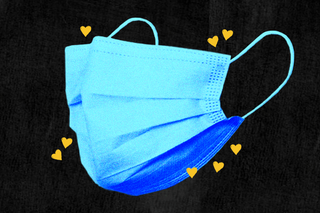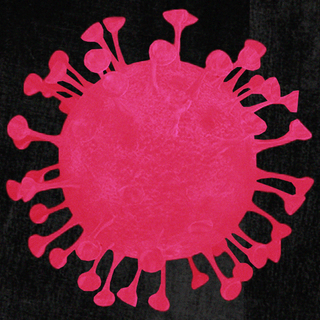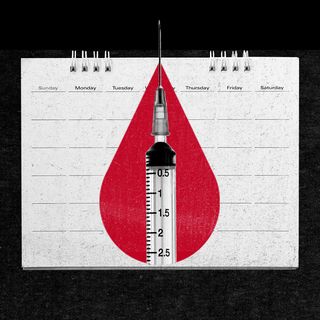
New Study Shows Mask Wearing Has Changed What We Find Attractive
People who wear surgical blue masks are deemed most appealing — because we associate them with safety and care.

There’s so much the now-ubiquitous face masks do. They protect from a virus, serve as nifty fashion accessories, and turns out, they may play the role of insentient cupids too. A new research found a face covered with a disposable-type surgical mask was likely to be deemed the most “appealing.” In other words, people were perceived to be more attractive when masked.
Courtesy evolutionary psychology, living in fear of disease and contagion may have influenced how we select our partners.
What do face masks have to do with romantic attraction, you ask? That was the core thesis of the research published in the journal Cognitive Research: Principles and Implications this week. In an experiment, Michael Lewis and Oliver Hies, readers from Cardiff University’s school of psychology, asked 43 women to rate the attractiveness of male faces shown in a picture on a scale of one to 10. The pictures had three variations: one while the person wore a surgical mask, one without a mask, and one while holding a book in front of the bottom half of the face. In a second study, the researchers asked male participants to look at females in masks, the results of which are yet to be published but Lewis notes the trend runs similar. They did not ask the participants their sexual orientations.
Based on how the participants rated the pictures, the researchers concludedmen wearing surgical masks were a clear crowd-pleaser, followed by those wearing cloth masks. The pictures of unmasked men were scored the least (we wonder why — what’s not to like about people flouting Covid19 precautions?).
The appearance–boost surgical masks offer may seem visceral. “This may be because we’re used to healthcare workers wearing blue masks and now we associate these with people in caring or medical professions,” Lewis told The Guardian. “At a time when we feel vulnerable, we may find the wearing of medical masks reassuring and so feel more positive towards the wearer.”
The problem of disposable masks is still very much an environmental concern. But in a behavioral and relationship-oriented context, they work to send all the right signals. Being able to associate with someone who can protect you — doctors, nurses — adds to the attractive quotient.
Related on The Swaddle:
Why We Always Think We Look Bad in Pictures
If this study was done pre-pandemic, the results would most likelyhave been drastically different. It was thought “masks made people think about disease and the person should be avoided” — inevitably reducing the attractiveness of an individual, regardless of their base attractiveness. It came to be known as the “sanitary-mask effect.”
But the psychology of how we perceive mask-wearers has evolved. Instead of instinctively thinking “the person has a disease” or “I need to stay away,” the response is to associate them with the aspirational figures of health workers and what they represent.
In some ways, research around attractiveness and masked individuals is counterintuitive. People form an implicit association between surgical masks and illness, as shown in previous studies. At the same time, medical masks become closely associated with social desirability as the wearer represents safety and adherence to public health measures. The latter may “reflect the role of social norms in attractiveness judgments,” researchers noted in a 2020 study titled “Beauty and the Mask.”
“It’s really a gesture of altruism when we chose to wear a mask cause we’re protecting others around us,” David Sarwer, who was part of the research, said.
The psychological response may also be an evolutionary trait — humans are wired to choose the healthiest-looking mate. “Disease and evidence of disease can play a big role in mate selection — previously any cues to disease would be a big turn-off. Now we can observe a shift in our psychology such that face masks are no longer acting as a contamination cue,” Lewis added.
Another explanation to why people look more attractive when half of their face is covered could be more superficial. People’s focus is redirected to the eyes, which are often rated as an important marker when deciding attractiveness. Previous research has shown covering any part of the face (say the left side or right side) also made someone look more attractive than they were. This is because the brain automatically fills the missing gaps and makes the overall appearance look more symmetrical — proven to be desirable on a visceral and biological level.
Or maybe, the person in the photograph was not conventionally attractive to start with, so a mask may have boosted their appearance by concealing some parts. As they say, less is more.
Arguably, the research, at the intersection of desirability and mask-wearing, binds cultural shifts with public health policies. Beauty does lie in the eyes of the beholder, but the mask-wearer also deserves credit. For now, this is just one more chapter in the unending saga of love in the times of a pandemic.
Saumya Kalia is an Associate Editor at The Swaddle. Her journalism and writing explore issues of social justice, digital sub-cultures, media ecosystem, literature, and memory as they cut across socio-cultural periods. You can reach her at @Saumya_Kalia.
Related


Why Scientists Say ‘Deltacron’ May Not Be a New Variant
